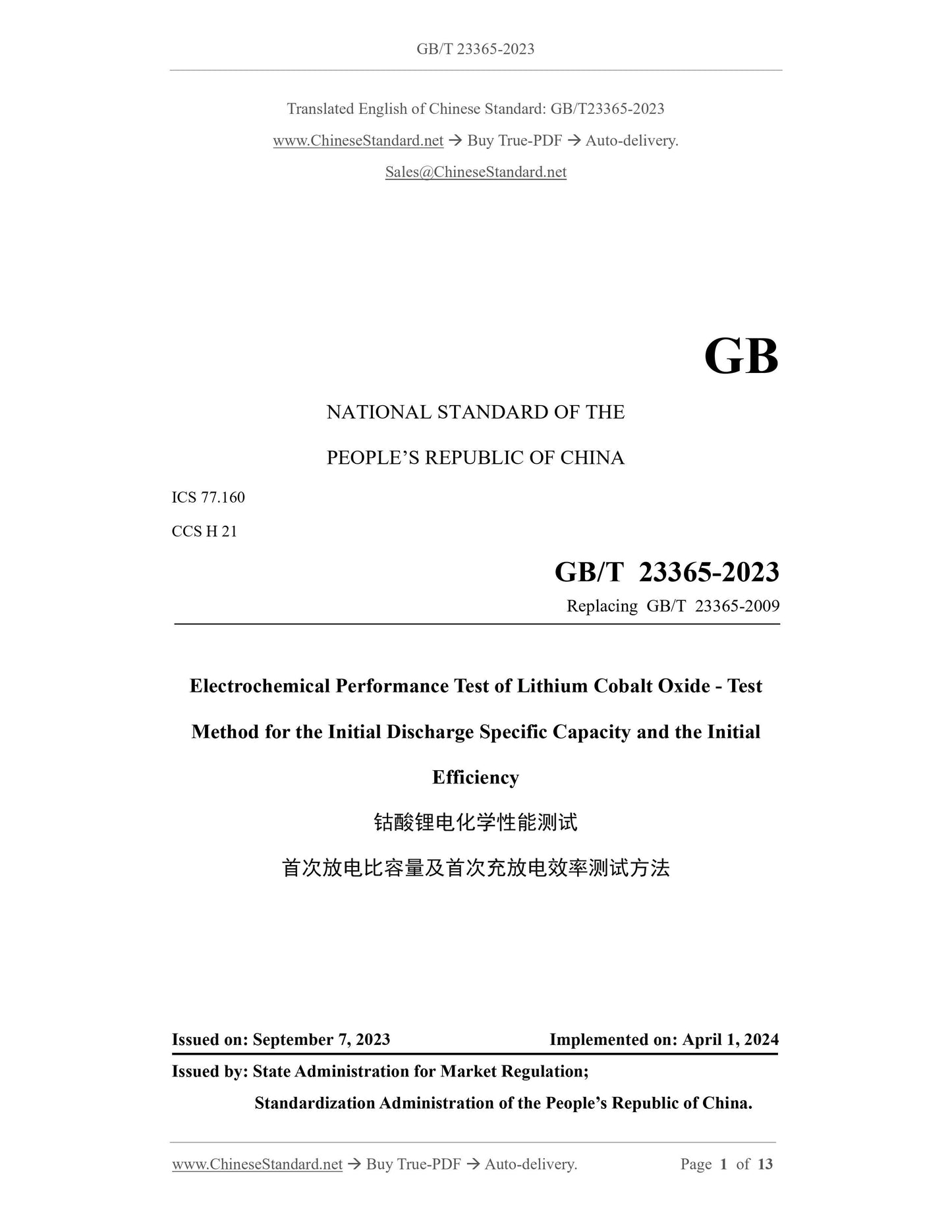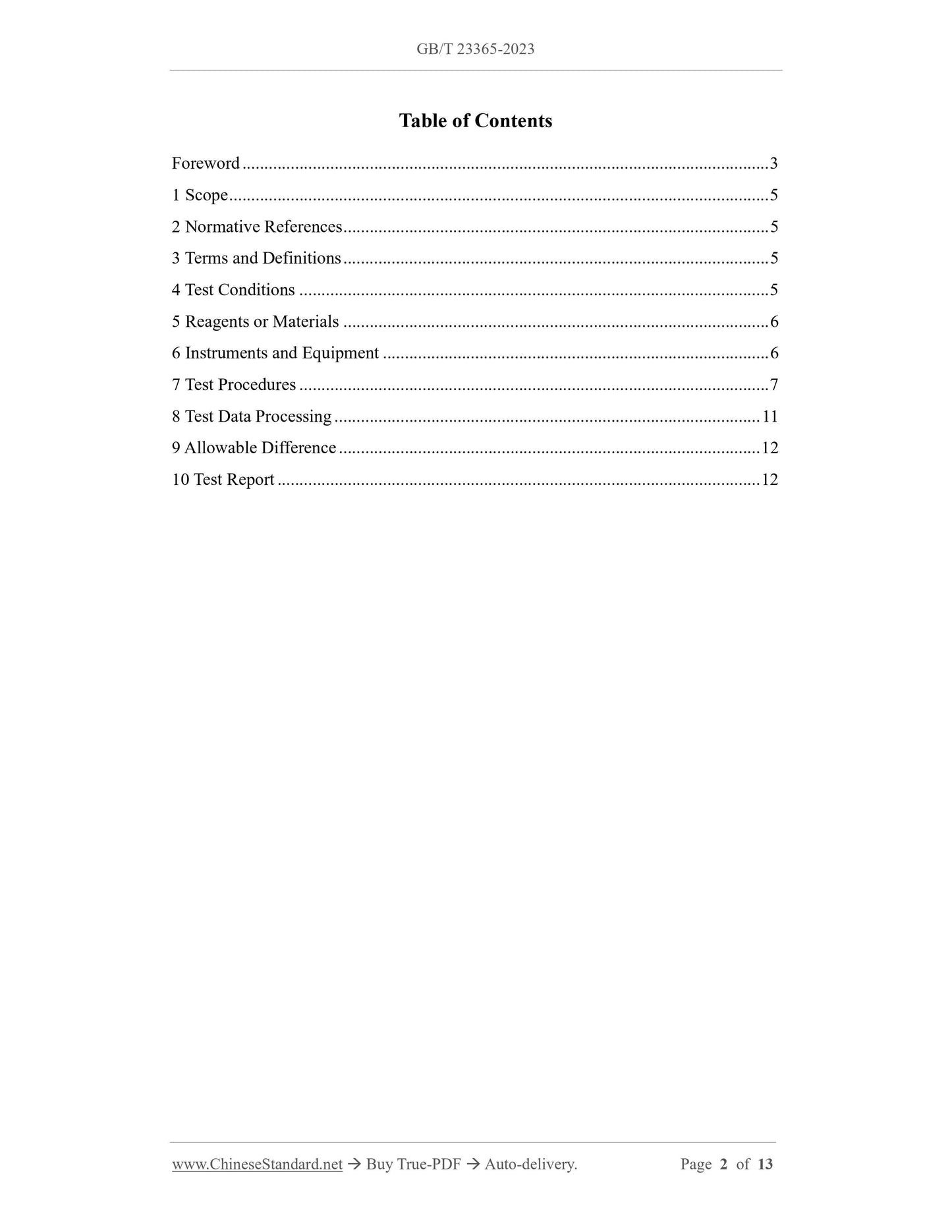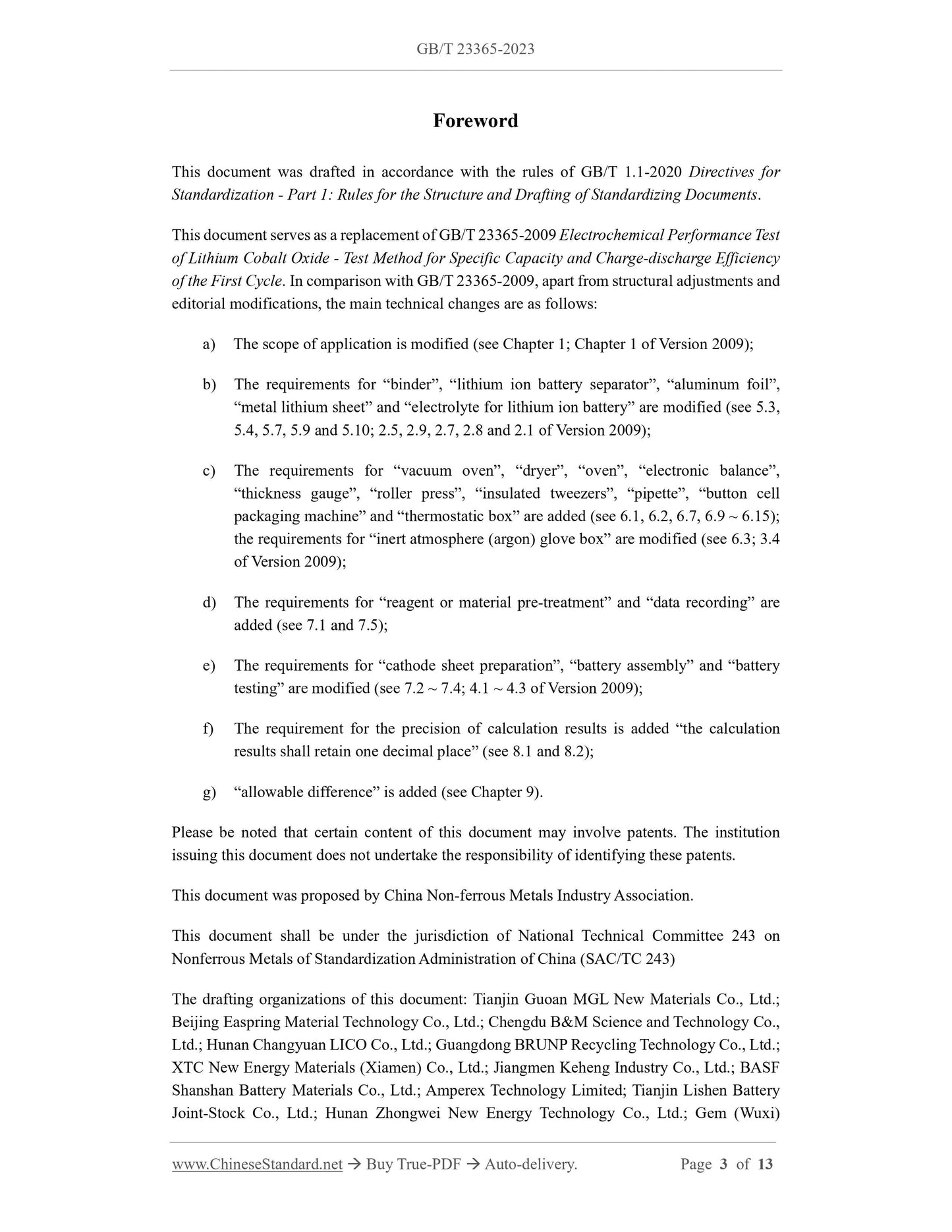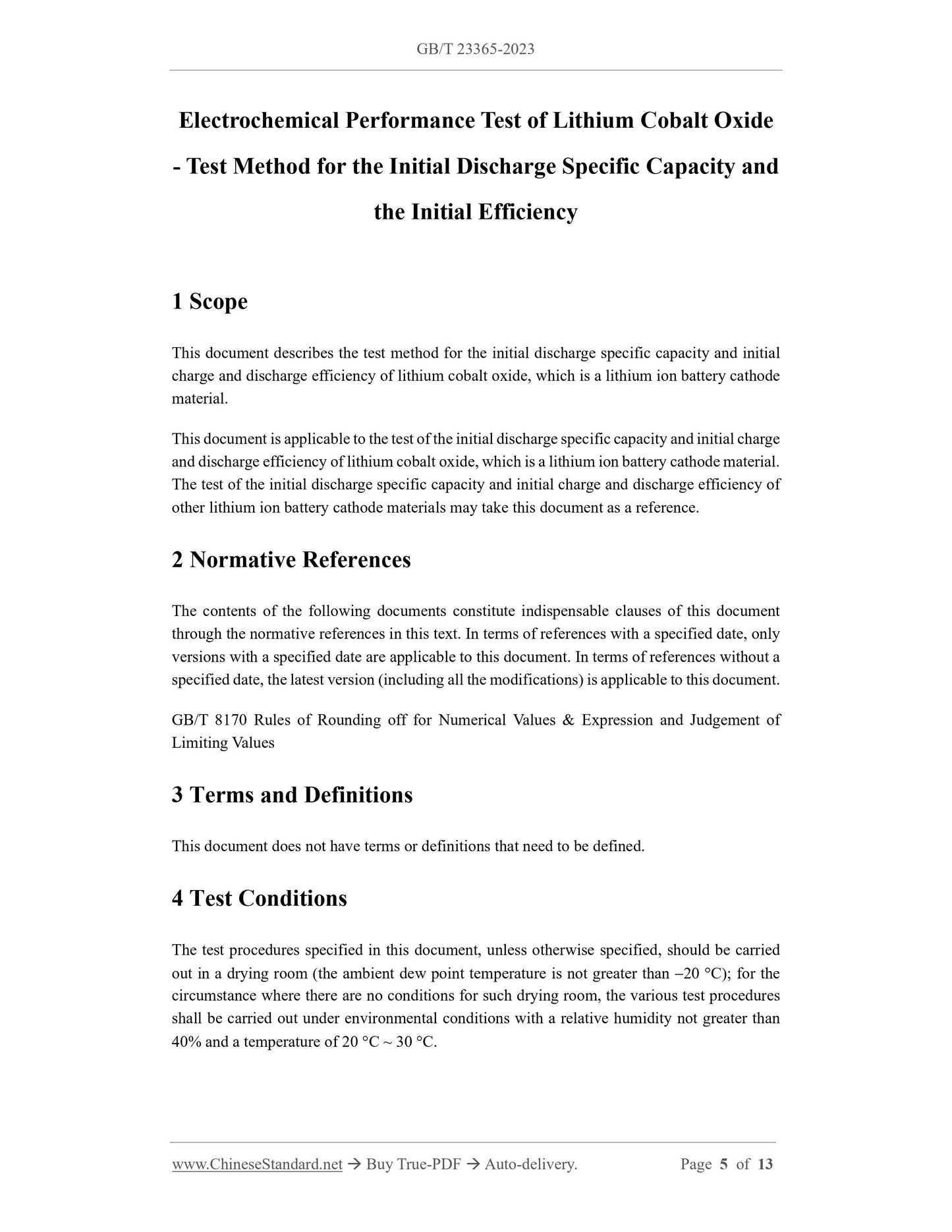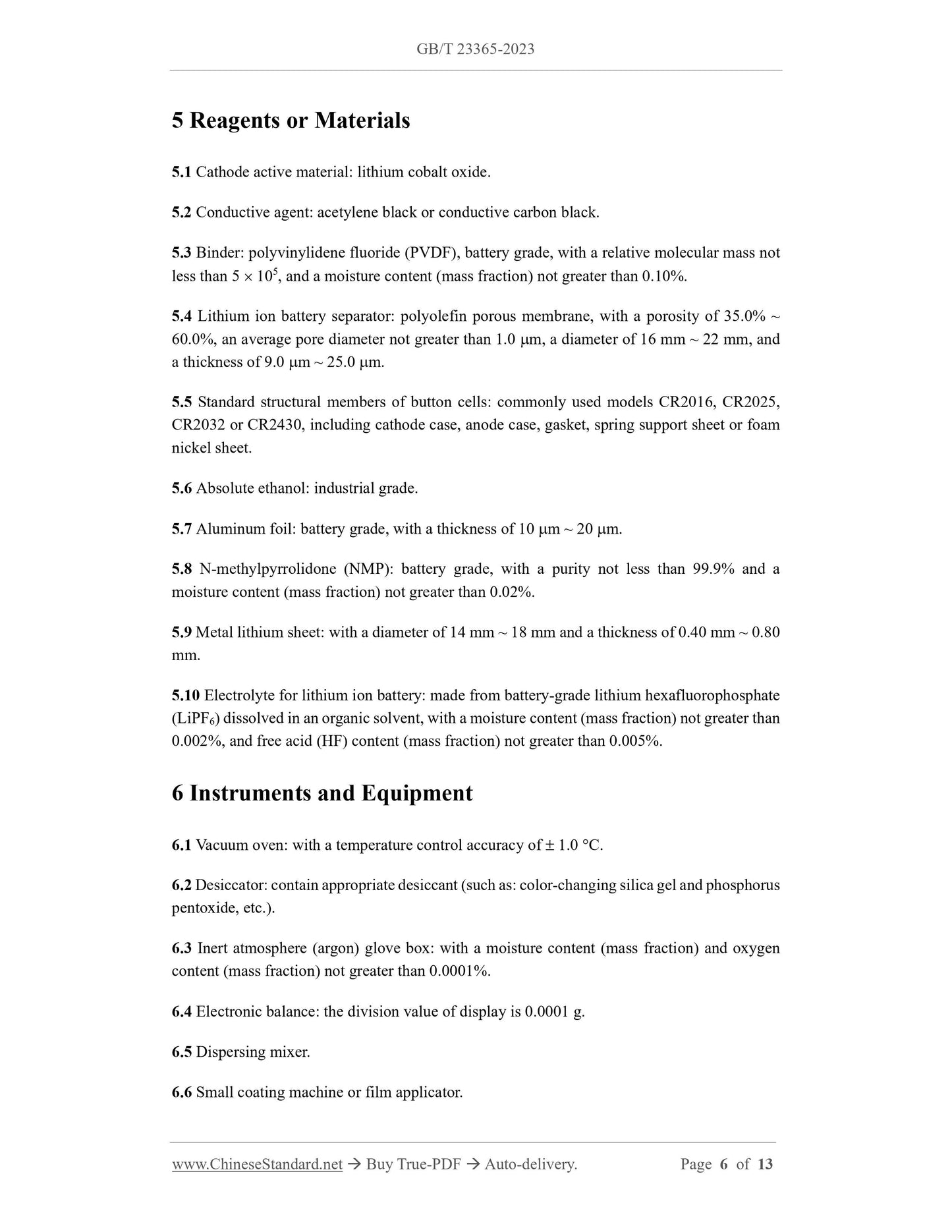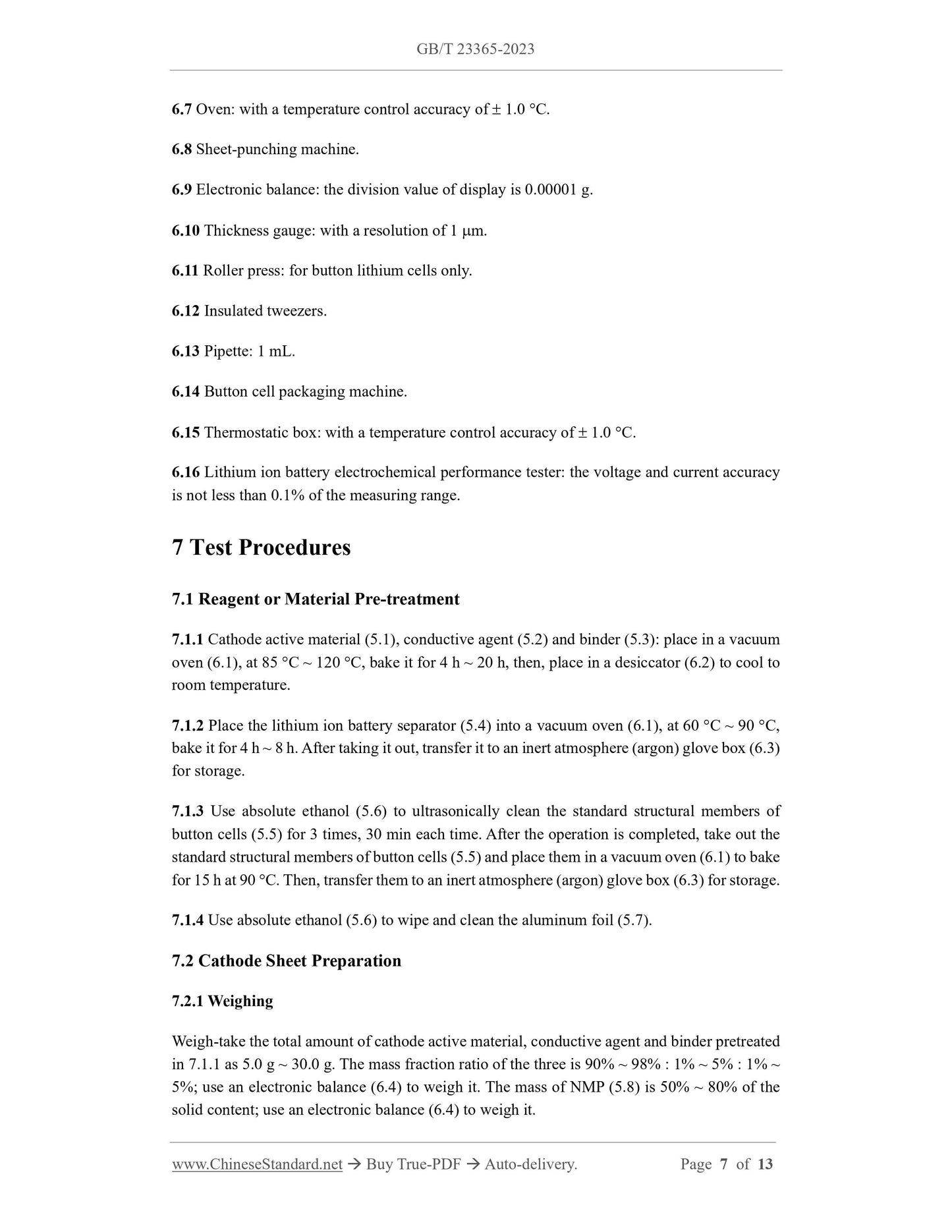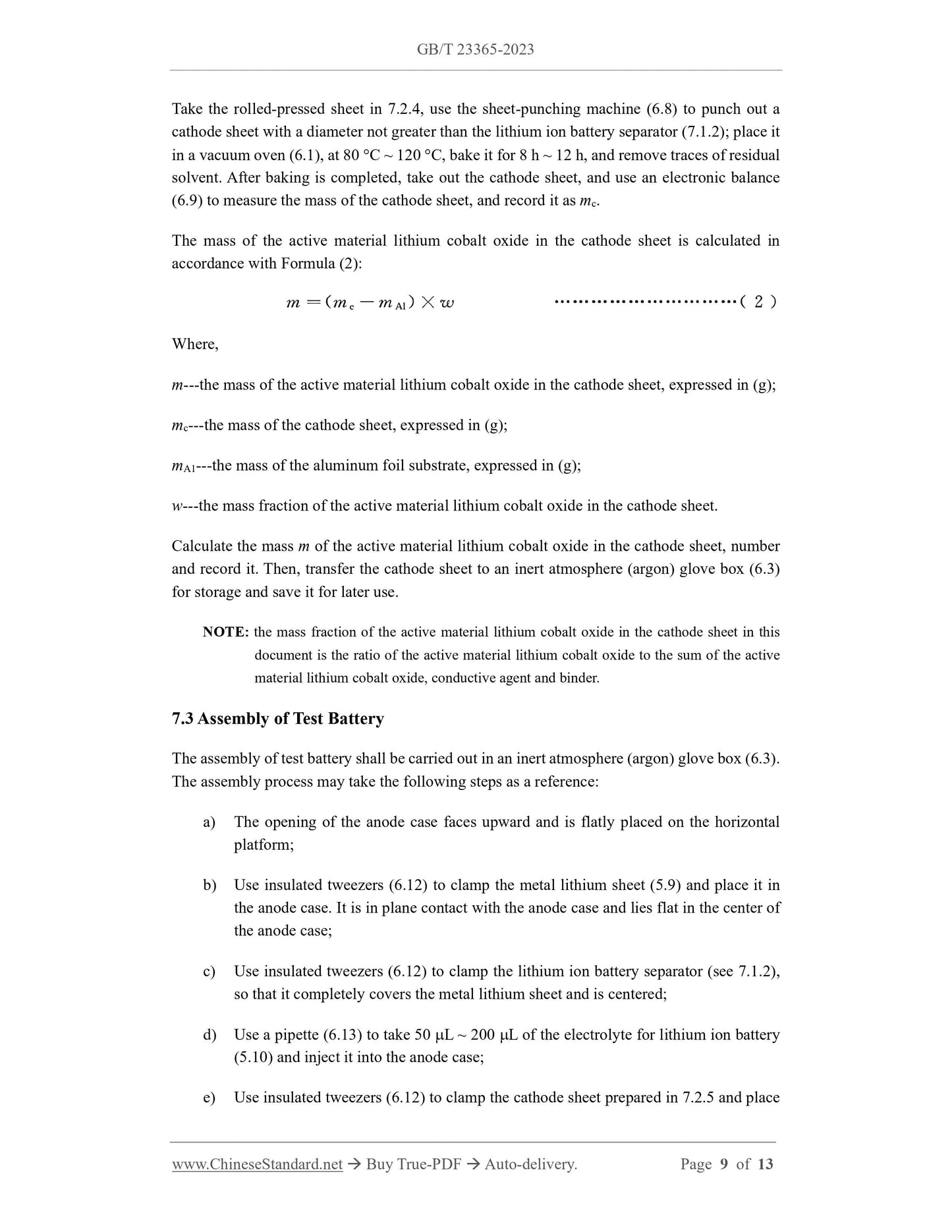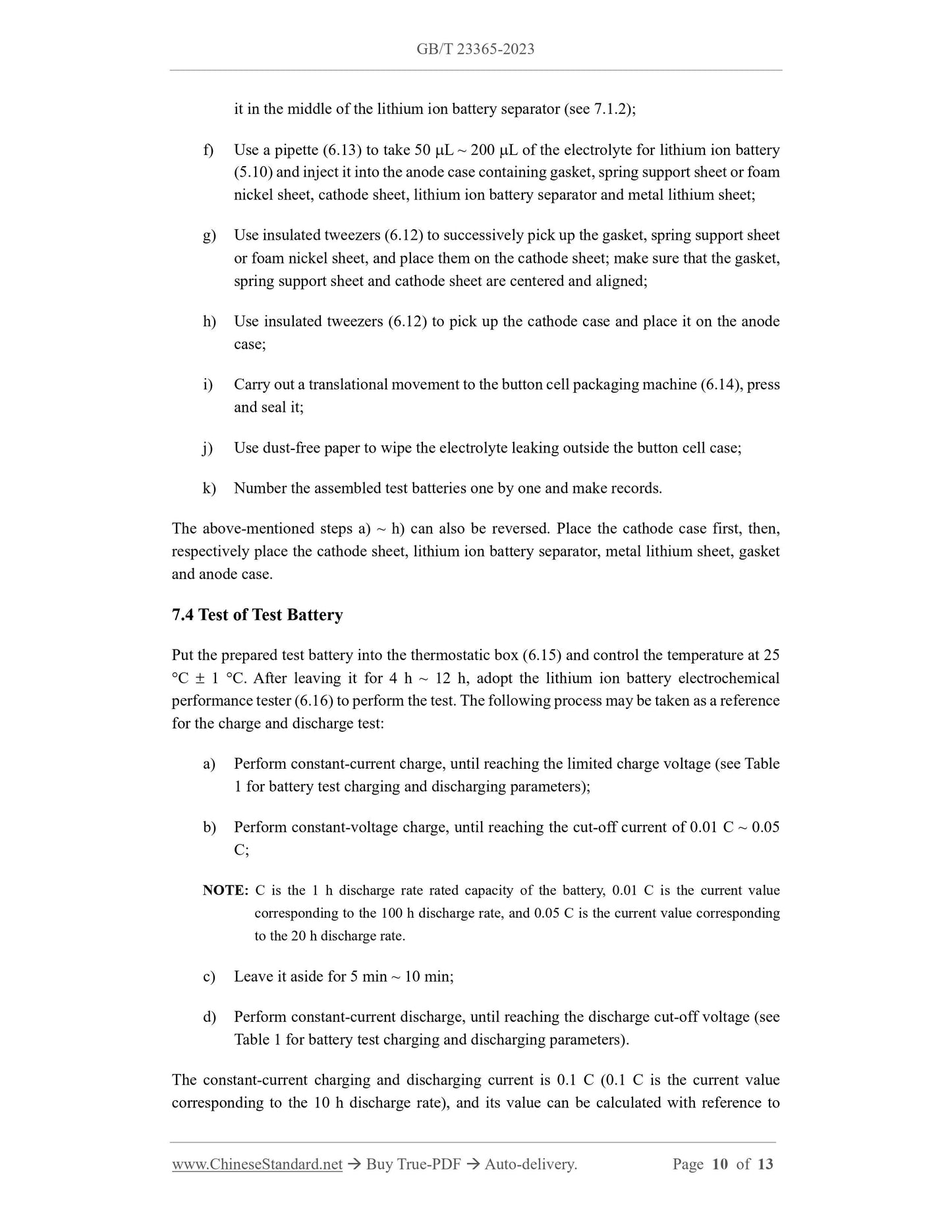1
/
of
8
www.ChineseStandard.us -- Field Test Asia Pte. Ltd.
GB/T 23365-2023 English PDF (GB/T23365-2023)
GB/T 23365-2023 English PDF (GB/T23365-2023)
Regular price
$165.00
Regular price
Sale price
$165.00
Unit price
/
per
Shipping calculated at checkout.
Couldn't load pickup availability
GB/T 23365-2023: Electrochemical performance test of lithium cobalt oxide - Test method for the initial discharge specific capacity and the initial efficiency
Delivery: 9 seconds. Download (and Email) true-PDF + Invoice.Get Quotation: Click GB/T 23365-2023 (Self-service in 1-minute)
Newer / historical versions: GB/T 23365-2023
Preview True-PDF
Scope
This document describes the test method for the initial discharge specific capacity and initialcharge and discharge efficiency of lithium cobalt oxide, which is a lithium ion battery cathode
material.
This document is applicable to the test of the initial discharge specific capacity and initial charge
and discharge efficiency of lithium cobalt oxide, which is a lithium ion battery cathode material.
The test of the initial discharge specific capacity and initial charge and discharge efficiency of
other lithium ion battery cathode materials may take this document as a reference.
Basic Data
| Standard ID | GB/T 23365-2023 (GB/T23365-2023) |
| Description (Translated English) | Electrochemical performance test of lithium cobalt oxide - Test method for the initial discharge specific capacity and the initial efficiency |
| Sector / Industry | National Standard (Recommended) |
| Classification of Chinese Standard | H21 |
| Classification of International Standard | 77.160 |
| Word Count Estimation | 10,180 |
| Date of Issue | 2023-09-07 |
| Date of Implementation | 2024-04-01 |
| Older Standard (superseded by this standard) | GB/T 23365-2009 |
| Issuing agency(ies) | State Administration for Market Regulation, China National Standardization Administration |
Share
